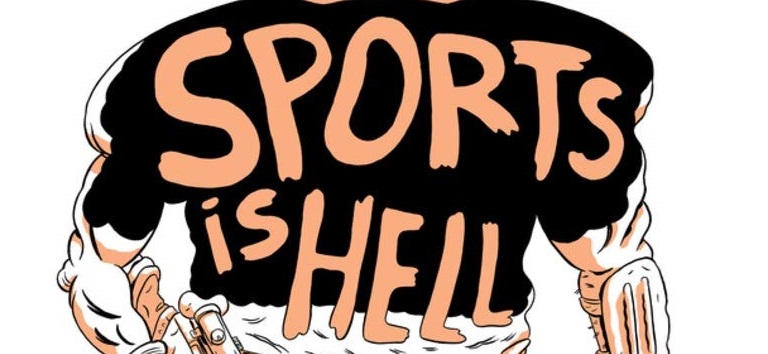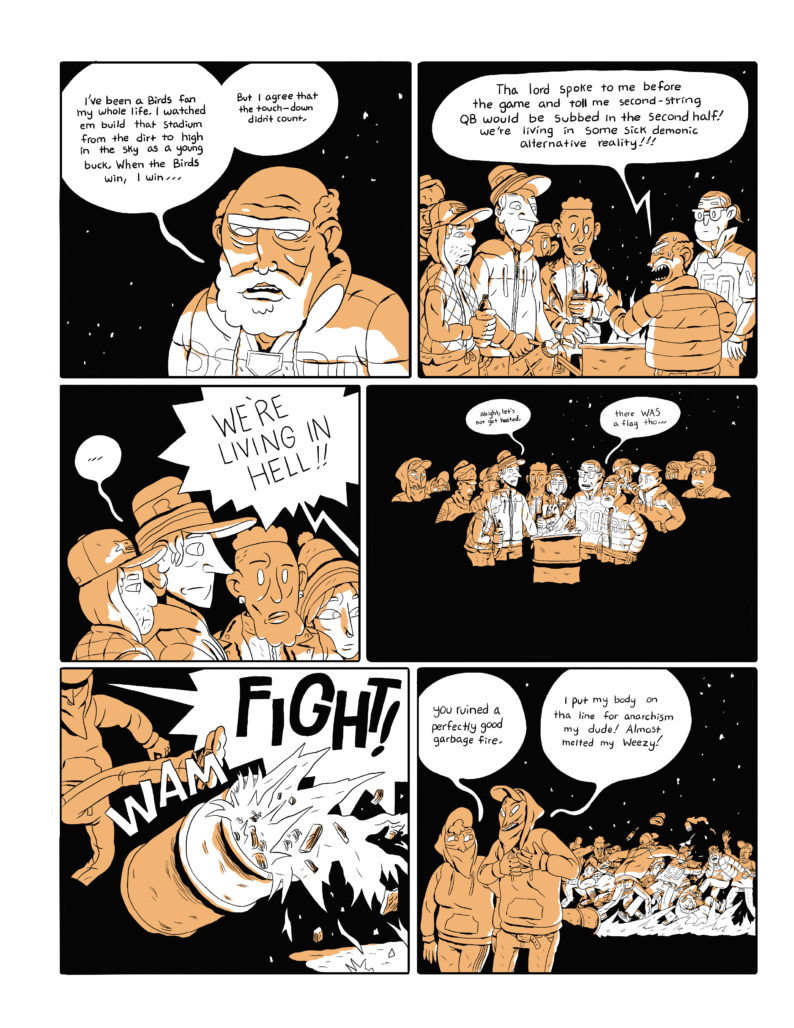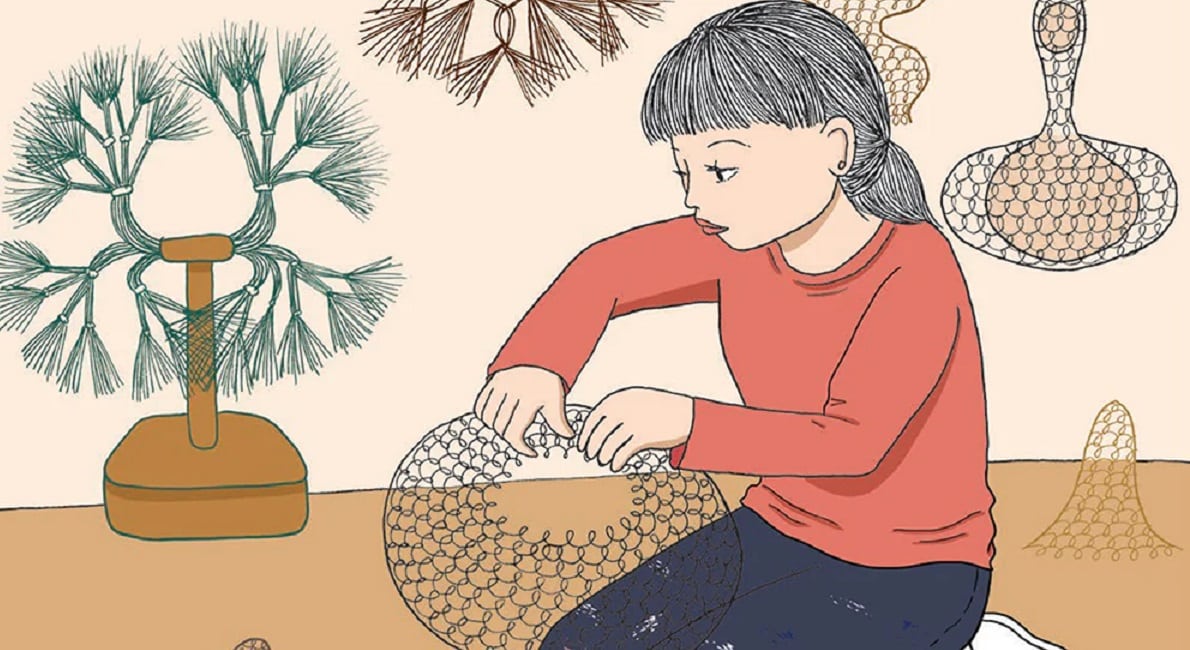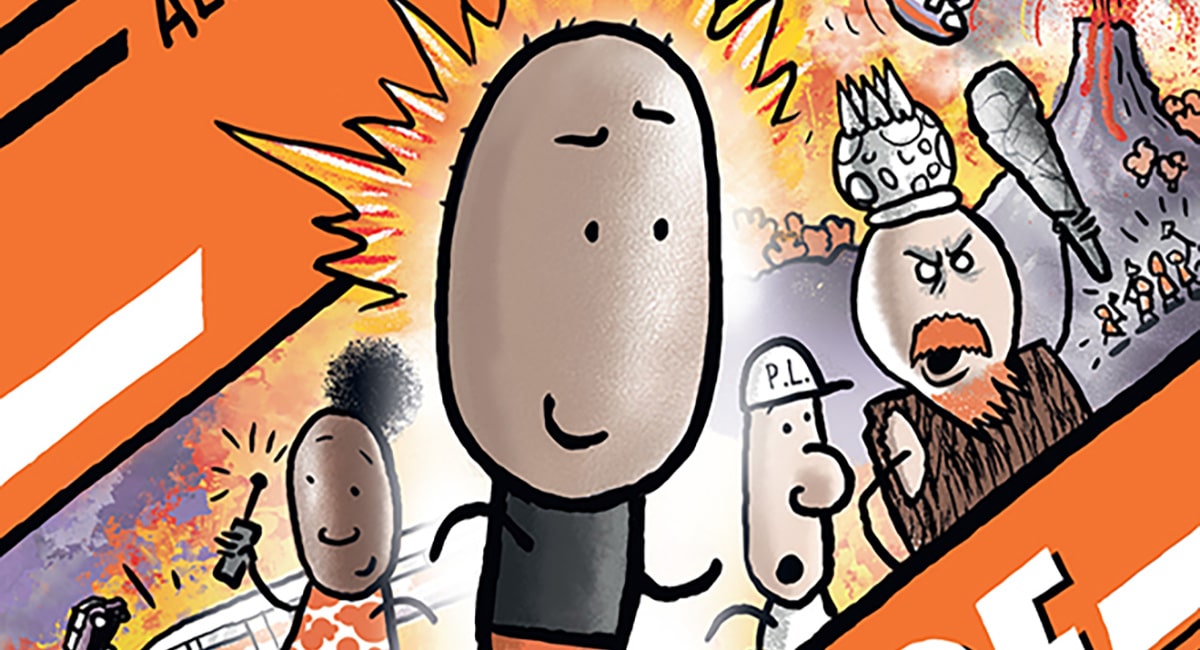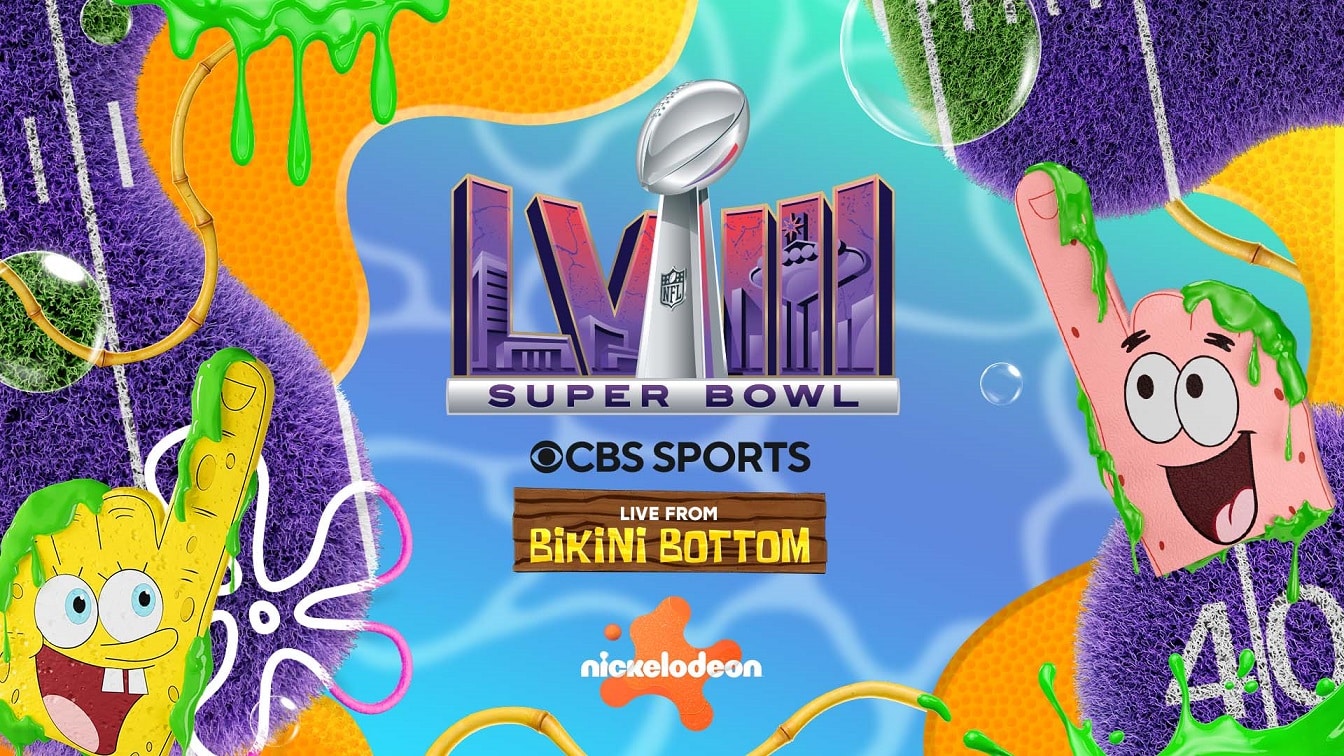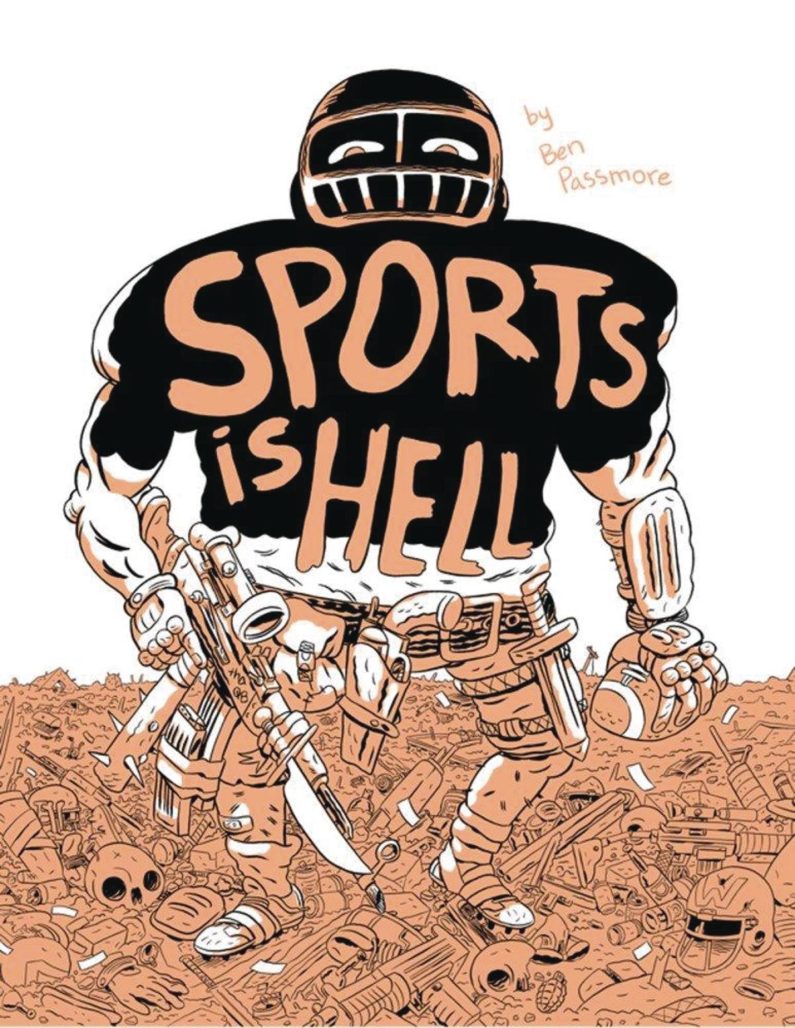
Sports is Hell is the story of Ash. Her town is hosting a Super Bowl-type event and she’s convinced by her friend Kekwu to go out in the streets to walk around and perhaps even cause mischief after the event. After a power outage causes people on the streets to question the end result of the game, passion and fervor for the game runs so high that a riot soon breaks. She’s quickly separated from her friend and ends up joining a small group of survivors fighting their way through various armed groups of football fanatics in order to meet the star receiver, Marshall Quandary Collins (a Colin Kaepernik-esque stand-in) who could potentially put an end to the madness unfolding in the city. See, Collins kneels during the national anthem, and this is seen as a point of contention for various fans and groups around the city.
Football in this comic is used as a common unifier, something that everyone enjoys and gets invested in. That is the dizzying high I mentioned earlier. Almost 100 million Americans watch the Super Bowl every year. It’s an event that brings together people from everywhere in society, regardless of class, race or status. It’s a modern day gladiatorial battle that Americans use as a distraction from their heavily siloed, dysfunctional and broken environment. No wonder, then, that Passmore uses “The Big Game” as a catalyst for a confrontation on race, economics, politics and everything in between. It’s a unifier until all those different views and opinions begin to clash. Then it turns into a riot, which degenerates into urban warfare.
What struck me as incredibly strong is the way Passmore weaves all of these themes, exposing it for all of its contradictions and complexities. For example, there’s a wonderful subplot involving an awkward and aloof straight white couple. They describe themselves as allies, but the first time they meet one of our protagonists, Questlike, a tall black revolutionary, they instantly assume he’s panhandling. They might mean well, but their support is inefficient and their words of support are hollow (see: Is it the Black Lives Matter protest? It’s so exciting!). Their cluelessness and privilege allowed them to avoid seeing, experiencing or even comprehending the issues facing the black community. Later in the book, after the woman in the couple witnesses the killing of her boyfriend by a group of white supremacists, who then kidnap and force her and the group she is with to recreate a football game under duress, she’s still unsure about the choice of her black friends to escape using violent means. It’s all in the appearances, inflict violence politely, otherwise you’re on the wrong side. The woman still expresses that she thought her black friends were nice, but after seeing them defend themselves so violently, she’s not so sure anymore.
These complexities and contradictions lead to some of the most interesting moments of Sports is Hell. The world is complex, and there is no easy answer to fix society or to prevent a riot from degenerating. Passmore avoids giving answers here, and focuses on drawing a portrait of an imperfect society and showcasing a microcosm where society ideological conflicts is laid bare. It forces readers to go beyond a facile reading of this text and engage with its content in a more intellectual manner. It shows the myths that we build aren’t always as strong as we’d like to think they are.
Passmore’s expressive characters are perfect here. Their faces convey an incredible range of emotions, subtle when they need to be and exaggerated when they should be. The amount of details in some pages is absolutely staggering. The title page depicting the crowds outside of the stadium is jaw-dropping. Perhaps even more stunning is the contrast between the apricot colour and the black colour used throughout. It shines especially in darker scenes where it creates a tense feeling of suspense for the characters going through the rioting streets. His lettering here, moving and weaving, complements his figures perfectly.
We’ve included Passmore’s comic Your Black Friend as part of our best comics of the decade list. His political work is exceptional, and Sports is Hell is no exception.


